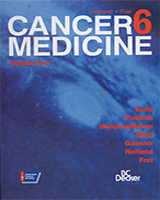From: Chapter 36e, Imaging of Musculoskeletal Neoplasms

Holland-Frei Cancer Medicine. 6th edition.
Kufe DW, Pollock RE, Weichselbaum RR, et al., editors.
Hamilton (ON): BC Decker; 2003.
Copyright © 2003, BC Decker Inc.
NCBI Bookshelf. A service of the National Library of Medicine, National Institutes of Health.

